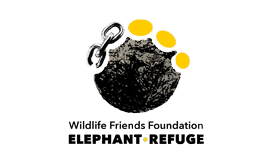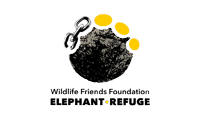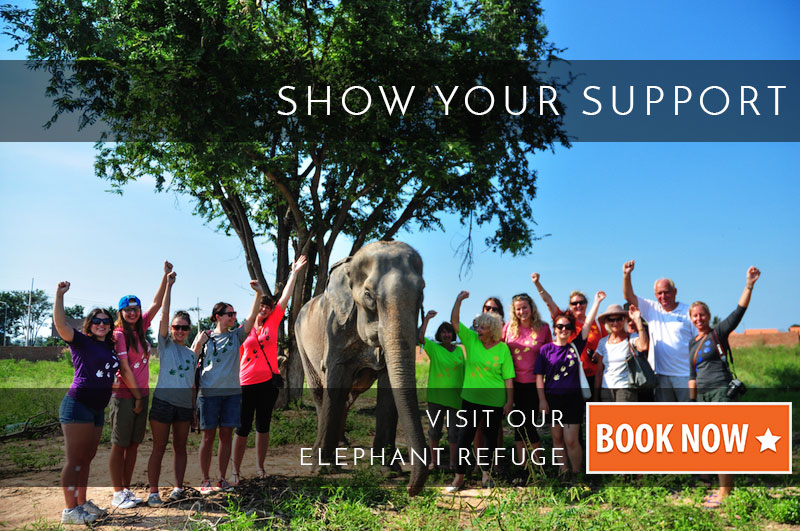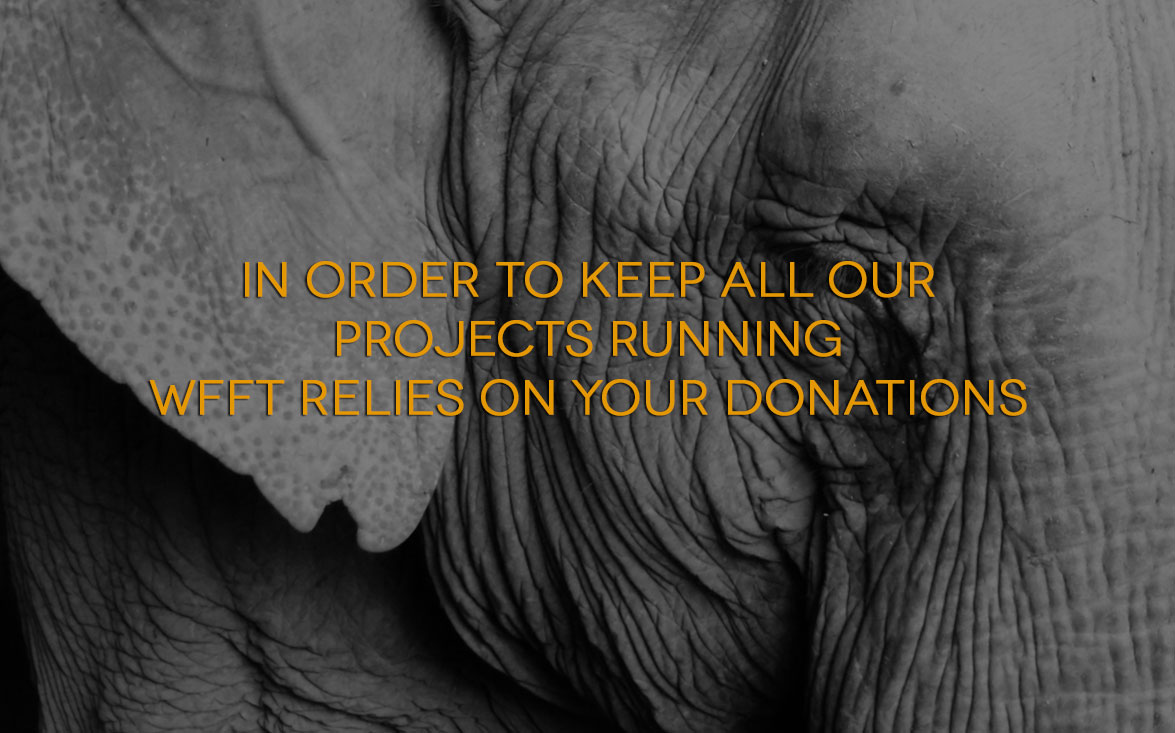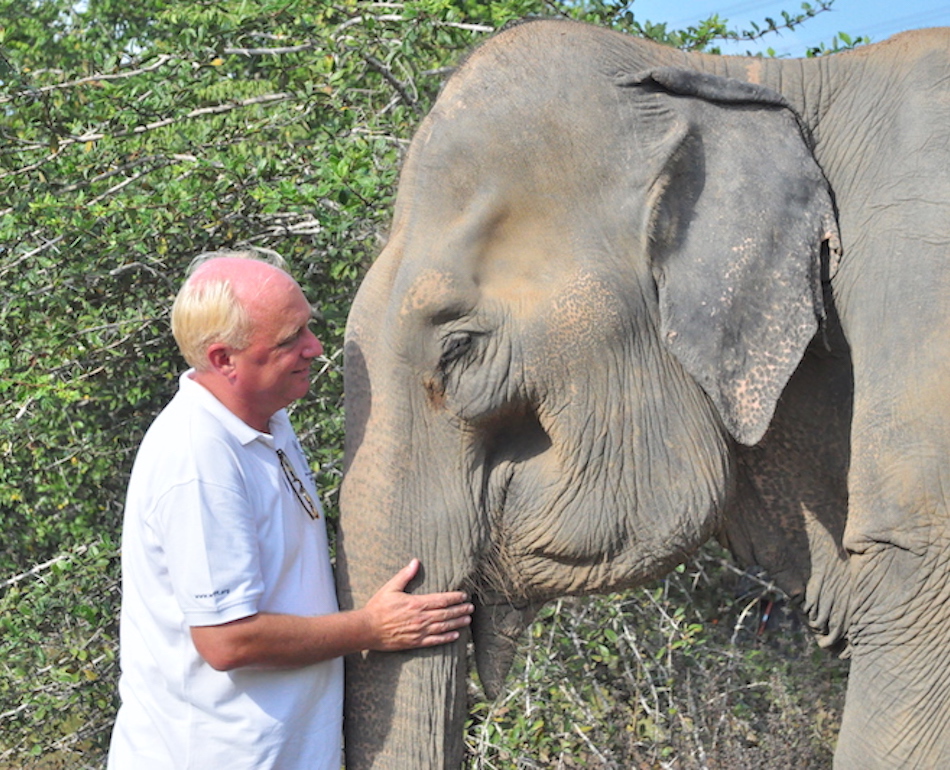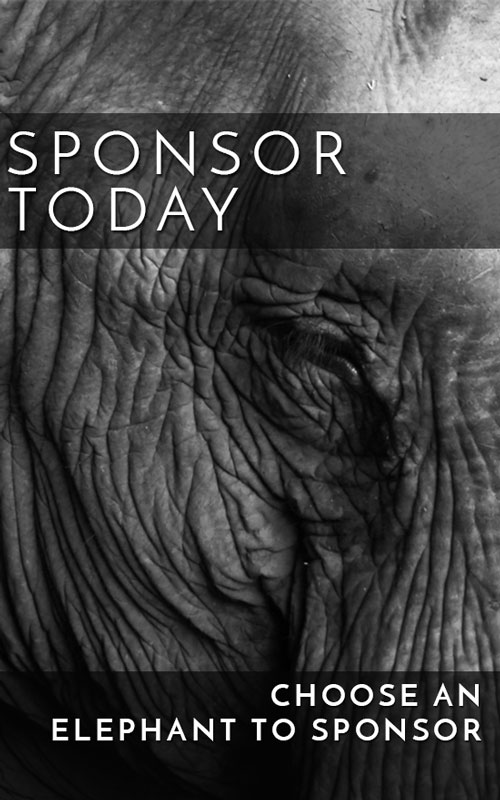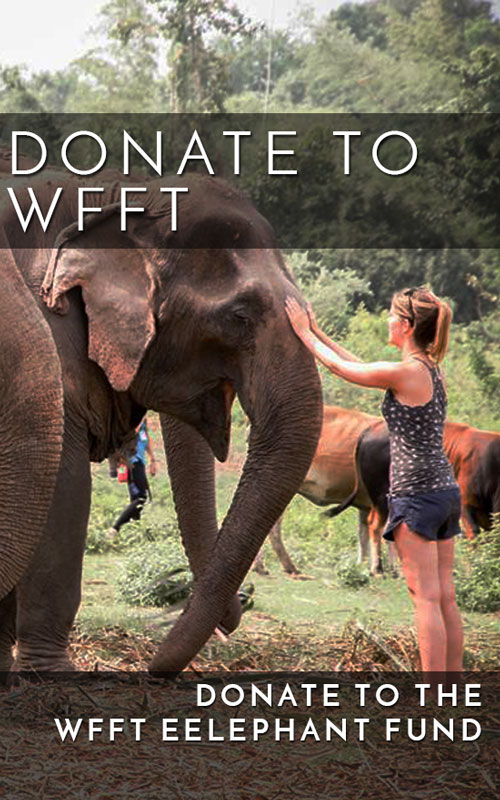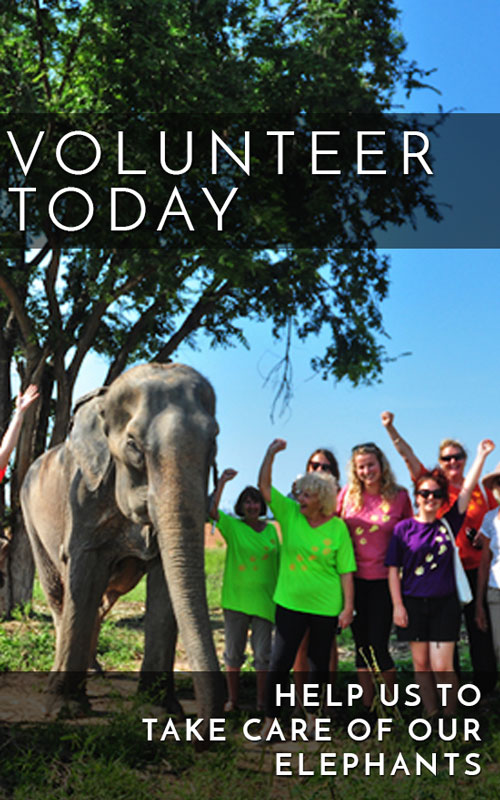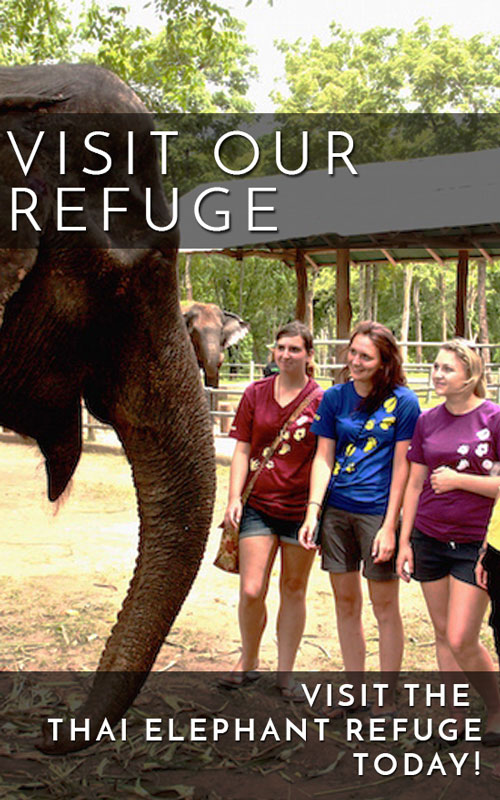WFFT Thai Elephant Refuge
![]() The Wildlife Friends Foundation Thailand (WFFT) was founded in 2001 and since then we have built up an organization, which provides full-time care for almost 1000 wild animals, and has rescued over 5,000 wild animals since its inception over 14 years ago. We manage two wildlife rescue centers, one in Thailand and one in Laos with 115 staff members and 60 volunteers. Along with the direct care of wildlife we also run various other projects and wildlife protection campaigns.
The Wildlife Friends Foundation Thailand (WFFT) was founded in 2001 and since then we have built up an organization, which provides full-time care for almost 1000 wild animals, and has rescued over 5,000 wild animals since its inception over 14 years ago. We manage two wildlife rescue centers, one in Thailand and one in Laos with 115 staff members and 60 volunteers. Along with the direct care of wildlife we also run various other projects and wildlife protection campaigns.
WFFT Elephant Refuge
![]() The WFFT Elephant Refuge houses numerous elephants ranging in age from 1 year old to 65 year old. All the elephants in our care have come from abusive pasts.
The WFFT Elephant Refuge houses numerous elephants ranging in age from 1 year old to 65 year old. All the elephants in our care have come from abusive pasts.
Thailand is home to both populations of wild and domesticated populations of the Asian elephant. The domestic population is sadly made up of animals that have been caught from the wild or bred in captivity. These animals have been trained/broken to live and work in the tourist or logging industry.
Today, Thailand’s wild population elephant population is struggling for survival.
The wild elephant population of Thailand is estimated at 2000 individuals that live in open grasslands and dense rainforests spread over the country. Historically, domestic elephants have been used predominantly in the logging industry, ironically and unwillingly helping to destroy the very habitat they rely on to survive.
After the ban on logging in 1989, most of the logging elephants ended up being used within the tourist industry or have been used to make a living by begging on the streets of big cities.
Walking day and night on these dirty and traffic-congested streets is detrimental to the elephant’s health, and unnatural.
Street begging elephants often end up being involved in road traffic accidents, with fatalities commonly occurring for both the elephant and the mahout. Unfortunately, in Thailand, there are currently no laws to prevent this abuse and mistreatment. Therefore there is an urgent need to help these anim
Domesticated Elephants in Thailand
![]() Asian elephants have a long history of domestication. They were probably used as work animals as long ago as 2000 BC. They were used in war against Alexander the Great in 326 BC and they accompanied Hannibal and his army across the Alps in 218 BC. Even during World War Two and the Vietnam War they were used to transport supplies. In Thailand, as in many countries in Asia, the Asian elephant has been domesticated and used by humans for many years to work in the logging industry. Following the ban on commercial logging in Thailand in 1989 these working elephants were no longer needed.
Asian elephants have a long history of domestication. They were probably used as work animals as long ago as 2000 BC. They were used in war against Alexander the Great in 326 BC and they accompanied Hannibal and his army across the Alps in 218 BC. Even during World War Two and the Vietnam War they were used to transport supplies. In Thailand, as in many countries in Asia, the Asian elephant has been domesticated and used by humans for many years to work in the logging industry. Following the ban on commercial logging in Thailand in 1989 these working elephants were no longer needed.
Suddenly hundreds of elephants and their owners were left with a very uncertain future.
Their owners were forced to seek alternative methods to use their elephants to make a living, and this has led to the problem of ‘begging’ elephants on city streets.
Begging elephants
![]() Begging elephants are a common sight in some of the major towns and cities in Thailand such as Bangkok, although this practice is illegal. These elephants are paraded around and used as begging tools: their owners will ask for money to help buy food for the elephants. Money can be made by simply walking an elephant through the streets and selling fruit and vegetables for people to feed it.
Begging elephants are a common sight in some of the major towns and cities in Thailand such as Bangkok, although this practice is illegal. These elephants are paraded around and used as begging tools: their owners will ask for money to help buy food for the elephants. Money can be made by simply walking an elephant through the streets and selling fruit and vegetables for people to feed it.
Elephants are made to roam the streets at night for many hours, often being deprived of food and water to prevent excretion.
They are often drugged to make them easier to handle, and beaten with spike hammers to make them perform tricks. The dirt and hectic city environment is far from ideal for these elephants, which are by nature forest dwellers. The noise and traffic causes them considerable stress, not to mention the dangers posed by the traffic.
Every year many elephants are killed or injured in traffic accidents.
The polluted air is extremely damaging to the elephants’ health and they frequently sustain injuries by stepping on broken glass and other debris.
During the day the elephants are tied up out of sight, frequently on rubbish dumps and in disused car parks, often with inadequate shade, water or food. City elephants area frequently malnourished and do not consume anywhere near the amount of food that they should eat every day. The elephants are not bathed regularly, as elephants should be, and this often leads to skin diseases.
Elephant camps
![]() Other unfortunate elephants have ended up working at elephant camps, some with no cover against the burning sun. At some places they are cruelly exploited in the name of ‘entertainment’, forced to perform degrading and unnatural tricks purely to entertain tourists. Kept on chains 24 hours a day, these animals lose their dignity and freedom and merely exist as money-making commodities.
Other unfortunate elephants have ended up working at elephant camps, some with no cover against the burning sun. At some places they are cruelly exploited in the name of ‘entertainment’, forced to perform degrading and unnatural tricks purely to entertain tourists. Kept on chains 24 hours a day, these animals lose their dignity and freedom and merely exist as money-making commodities.
City Elephants
Domesticated elephants are still seen on the streets of Bangkok and other large cities in Thailand. The city is a harsh environment for such a large forest animal. The city dwelling is however a financially lucrative practice, bringing in more money than work at a tourist camp or elephants conservation facility. Instead of pounding up and down busy city streets, the elephants at WFFT now spend their days standing on natural ground of earth and grass instead of concrete or tarmac, breathing good fresh air instead of traffic fumes, eating as much as they like with the company of other elephants and having the care of our experienced mahouts and veterinary staff.
They are under constant threat of road accidents, pollution and a scorching heat that can be fatal to a large mammal such as the elephant.
In the late afternoons, all the elephants are walked out into the beautiful forest surrounding the centre where they spend the night foraging and eating natural foods as they would in the wild.
Mahouts in Thailand
![]() Elephant training is among the oldest jobs in the world. In the past and still today, a single mahout is assigned to each animal, forging a close bond that often lasts for life. In the past the job of a mahout was a hereditary profession often extending over several generations and bringing a certain social status with it. At present however, this is not common. The job of mahout is to earn a living from the elephants, which results in its exploitation. The real value of a mahout lies in the understanding and knowing of the animal. A good mahout is often a man who has been close to elephants since his childhood and who is able to see when an elephant is in a good or bad mood. He must be able to communicate with his elephant e.g. by nudging its ears.
Elephant training is among the oldest jobs in the world. In the past and still today, a single mahout is assigned to each animal, forging a close bond that often lasts for life. In the past the job of a mahout was a hereditary profession often extending over several generations and bringing a certain social status with it. At present however, this is not common. The job of mahout is to earn a living from the elephants, which results in its exploitation. The real value of a mahout lies in the understanding and knowing of the animal. A good mahout is often a man who has been close to elephants since his childhood and who is able to see when an elephant is in a good or bad mood. He must be able to communicate with his elephant e.g. by nudging its ears.
Observing a mahout directing his elephant may sometimes look like maltreatment as the mahout uses a tool to pick on the elephant’s head, neck and ears. This stems from when an elephant is originally domesticated, whereby it undergoes a week long of torture to break its spirit. This involves chaining the elephant up so that it cannot move, and subjecting it to continuous physical and mental discomfort. In sight of, but out of reach of food and water, the elephant is starved and beaten day and night from mahouts on shift so that it cannot sleep.
The elephant is starved and beaten day and night from mahouts on shift so that it cannot sleep.
You may notice various scars on the elephants and holes in the ears from aggressive use of the bull hook during the domestication process. Mahouts carry the hook as a reminder to the elephant who is boss. Although no damage is usually done during day-to-day use of the hook, it causes enough discomfort to the elephant to remind them of their domestication, enabling the mahout to reinforce his control. Young elephants are torn away from their mothers at an age much earlier than they would normally become independent, thus adding another dimension to the psychological cruelty involved.
Rescuing the elephants from the harsh city environment is already a big step to improving their welfare and general well-being, and demonstrates that the mahouts do care about their animals.
Changing Thai culture and mentality towards animal welfare is a much longer process. If mahouts think that westerners come to Thailand to ride elephants for their own enjoyment and “experience”, then this will support the motivation to domesticate elephants for the tourist industry. If mahouts come to learn that westerners visit Thailand to help prevent wildlife from suffering and do not support the exploitation of animals for amusement, then gradually a change in mentality could possibly be achieved.
WE HAVE ALREADY LOST 97%
OF THE THAI ELEPHANT POPULATION
Mortality during capture of wild elephants
![]() Capture of wild elephants for domestic use has become a threat to wild populations where numbers have been seriously reduced. Because of the long years of infancy, when an elephant is not capable of work, it has been the custom to take wild elephants and train them rather than breed from domesticated animals. India has banned capture in order to converse its wild herds, but in Myanmar hundreds are caught each year for the timber industry.
Capture of wild elephants for domestic use has become a threat to wild populations where numbers have been seriously reduced. Because of the long years of infancy, when an elephant is not capable of work, it has been the custom to take wild elephants and train them rather than breed from domesticated animals. India has banned capture in order to converse its wild herds, but in Myanmar hundreds are caught each year for the timber industry.
Unfortunately, crude capture methods have led to a high level of deaths and efforts are being made, not only to improve safety, but also captive breeding rather than taking from the wild.
WFFT Thai Elephant Refuge
The Wildlife Friends Foundation Thailand (WFFT) was founded in 2001 and since then we have built up an organization, which provides full-time care for almost 1000 wild animals, and has rescued over 5,000 wild animals since its inception over 14 years ago. We manage two wildlife rescue centers, one in Thailand and one in Laos with 115 staff members and 60 volunteers. Along with the direct care of wildlife we also run various other projects and wildlife protection campaigns.
WFFT Elephant Refuge
![]() The WFFT Elephant Refuge houses numerous elephants ranging in age from 1 year old to 65 year old. All the elephants in our care have come from abusive pasts.
The WFFT Elephant Refuge houses numerous elephants ranging in age from 1 year old to 65 year old. All the elephants in our care have come from abusive pasts.
Thailand is home to both populations of wild and domesticated populations of the Asian elephant. The domestic population is sadly made up of animals that have been caught from the wild or bred in captivity. These animals have been trained/broken to live and work in the tourist or logging industry.
Today, Thailand’s wild population elephant population is struggling for survival.
The wild elephant population of Thailand is estimated at 2000 individuals that live in open grasslands and dense rainforests spread over the country. Historically, domestic elephants have been used predominantly in the logging industry, ironically and unwillingly helping to destroy the very habitat they rely on to survive.
After the ban on logging in 1989, most of the logging elephants ended up being used within the tourist industry or have been used to make a living by begging on the streets of big cities. Walking day and night on these dirty and traffic-congested streets is detrimental to the elephant’s health, and unnatural. Street begging elephants often end up being involved in road traffic accidents, with fatalities commonly occurring for both the elephant and the mahout. Unfortunately, in Thailand, there are currently no laws to prevent this abuse and mistreatment. Therefore there is an urgent need to help these anim
Domesticated Elephants in Thailand
![]() Asian elephants have a long history of domestication. They were probably used as work animals as long ago as 2000 BC. They were used in war against Alexander the Great in 326 BC and they accompanied Hannibal and his army across the Alps in 218 BC. Even during World War Two and the Vietnam War they were used to transport supplies. In Thailand, as in many countries in Asia, the Asian elephant has been domesticated and used by humans for many years to work in the logging industry. Following the ban on commercial logging in Thailand in 1989 these working elephants were no longer needed. Suddenly hundreds of elephants and their owners were left with a very uncertain future, their owners were forced to seek alternative methods to use their elephants to make a living, and this has led to the problem of ‘begging’ elephants on city streets.
Asian elephants have a long history of domestication. They were probably used as work animals as long ago as 2000 BC. They were used in war against Alexander the Great in 326 BC and they accompanied Hannibal and his army across the Alps in 218 BC. Even during World War Two and the Vietnam War they were used to transport supplies. In Thailand, as in many countries in Asia, the Asian elephant has been domesticated and used by humans for many years to work in the logging industry. Following the ban on commercial logging in Thailand in 1989 these working elephants were no longer needed. Suddenly hundreds of elephants and their owners were left with a very uncertain future, their owners were forced to seek alternative methods to use their elephants to make a living, and this has led to the problem of ‘begging’ elephants on city streets.
Begging elephants
![]() Begging elephants are a common sight in some of the major towns and cities in Thailand such as Bangkok, although this practice is illegal. These elephants are paraded around and used as begging tools: their owners will ask for money to help buy food for the elephants. Money can be made by simply walking an elephant through the streets and selling fruit and vegetables for people to feed it.
Begging elephants are a common sight in some of the major towns and cities in Thailand such as Bangkok, although this practice is illegal. These elephants are paraded around and used as begging tools: their owners will ask for money to help buy food for the elephants. Money can be made by simply walking an elephant through the streets and selling fruit and vegetables for people to feed it.
Elephants are made to roam the streets at night for many hours, often being deprived of food and water to prevent excretion.
They are often drugged to make them easier to handle, and beaten with spike hammers to make them perform tricks. The dirt and hectic city environment is far from ideal for these elephants, which are by nature forest dwellers. The noise and traffic causes them considerable stress, not to mention the dangers posed by the traffic. Every year many elephants are killed or injured in traffic accidents. The polluted air is extremely damaging to the elephants’ health and they frequently sustain injuries by stepping on broken glass and other debris.
During the day the elephants are tied up out of sight, frequently on rubbish dumps and in disused car parks, often with inadequate shade, water or food. City elephants area frequently malnourished and do not consume anywhere near the amount of food that they should eat every day. The elephants are not bathed regularly, as elephants should be, and this often leads to skin diseases.
Elephant camps
Other unfortunate elephants have ended up working at elephant camps, some with no cover against the burning sun. At some places they are cruelly exploited in the name of ‘entertainment’, forced to perform degrading and unnatural tricks purely to entertain tourists. Kept on chains 24 hours a day, these animals lose their dignity and freedom and merely exist as money-making commodities.
City Elephants
Domesticated elephants are still seen on the streets of Bangkok and other large cities in Thailand. The city is a harsh environment for such a large forest animal. The city dwelling is however a financially lucrative practice, bringing in more money than work at a tourist camp or elephants conservation facility. Instead of pounding up and down busy city streets, the elephants at WFFT now spend their days standing on natural ground of earth and grass instead of concrete or tarmac, breathing good fresh air instead of traffic fumes, eating as much as they like with the company of other elephants and having the care of our experienced mahouts and veterinary staff.
They are under constant threat of road accidents, pollution and a scorching heat that can be fatal to a large mammal such as the elephant.
In the late afternoons, all the elephants are walked out into the beautiful forest surrounding the centre where they spend the night foraging and eating natural foods as they would in the wild.
Mahouts in Thailand
![]() Elephant training is among the oldest jobs in the world. In the past and still today, a single mahout is assigned to each animal, forging a close bond that often lasts for life. In the past the job of a mahout was a hereditary profession often extending over several generations and bringing a certain social status with it. At present however, this is not common. The job of mahout is to earn a living from the elephants, which results in its exploitation. The real value of a mahout lies in the understanding and knowing of the animal. A good mahout is often a man who has been close to elephants since his childhood and who is able to see when an elephant is in a good or bad mood. He must be able to communicate with his elephant e.g. by nudging its ears.
Elephant training is among the oldest jobs in the world. In the past and still today, a single mahout is assigned to each animal, forging a close bond that often lasts for life. In the past the job of a mahout was a hereditary profession often extending over several generations and bringing a certain social status with it. At present however, this is not common. The job of mahout is to earn a living from the elephants, which results in its exploitation. The real value of a mahout lies in the understanding and knowing of the animal. A good mahout is often a man who has been close to elephants since his childhood and who is able to see when an elephant is in a good or bad mood. He must be able to communicate with his elephant e.g. by nudging its ears.
Observing a mahout directing his elephant may sometimes look like maltreatment as the mahout uses a tool to pick on the elephant’s head, neck and ears. This stems from when an elephant is originally domesticated, whereby it undergoes a week long of torture to break its spirit. This involves chaining the elephant up so that it cannot move, and subjecting it to continuous physical and mental discomfort. In sight of, but out of reach of food and water, the elephant is starved and beaten day and night from mahouts on shift so that it cannot sleep.
The elephant is starved and beaten day and night from mahouts on shift so that it cannot sleep.
You may notice various scars on the elephants and holes in the ears from aggressive use of the bull hook during the domestication process. Mahouts carry the hook as a reminder to the elephant who is boss. Although no damage is usually done during day-to-day use of the hook, it causes enough discomfort to the elephant to remind them of their domestication, enabling the mahout to reinforce his control. Young elephants are torn away from their mothers at an age much earlier than they would normally become independent, thus adding another dimension to the psychological cruelty involved.
Rescuing the elephants from the harsh city environment is already a big step to improving their welfare and general well-being, and demonstrates that the mahouts do care about their animals. Changing Thai culture and mentality towards animal welfare is a much longer process. If mahouts think that westerners come to Thailand to ride elephants for their own enjoyment and “experience”, then this will support the motivation to domesticate elephants for the tourist industry. If mahouts come to learn that westerners visit Thailand to help prevent wildlife from suffering and do not support the exploitation of animals for amusement, then gradually a change in mentality could possibly be achieved.
WE HAVE ALREADY LOST 97%
OF THE THAI ELEPHANT POPULATION
Mortality during capture of wild elephants
Capture of wild elephants for domestic use has become a threat to wild populations where numbers have been seriously reduced. Because of the long years of infancy, when an elephant is not capable of work, it has been the custom to take wild elephants and train them rather than breed from domesticated animals. India has banned capture in order to converse its wild herds, but in Myanmar hundreds are caught each year for the timber industry. Unfortunately, crude capture methods have led to a high level of deaths and efforts are being made, not only to improve safety, but also captive breeding rather than taking from the wild.
